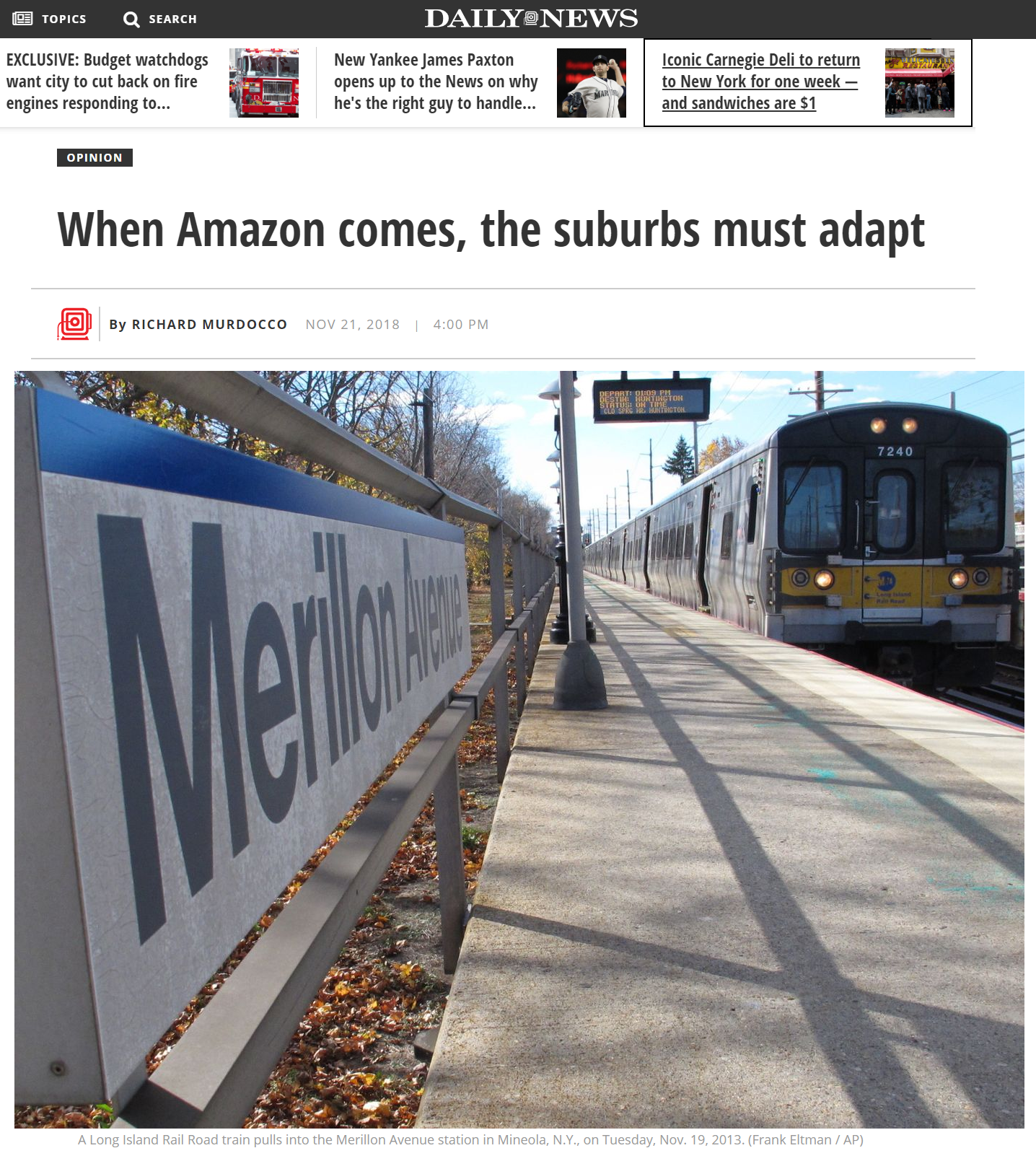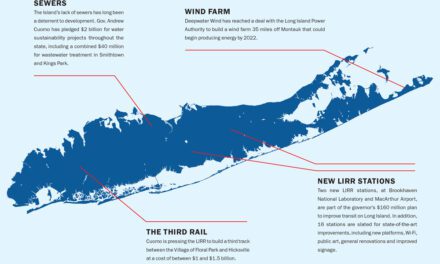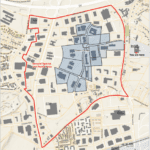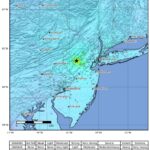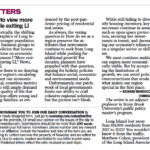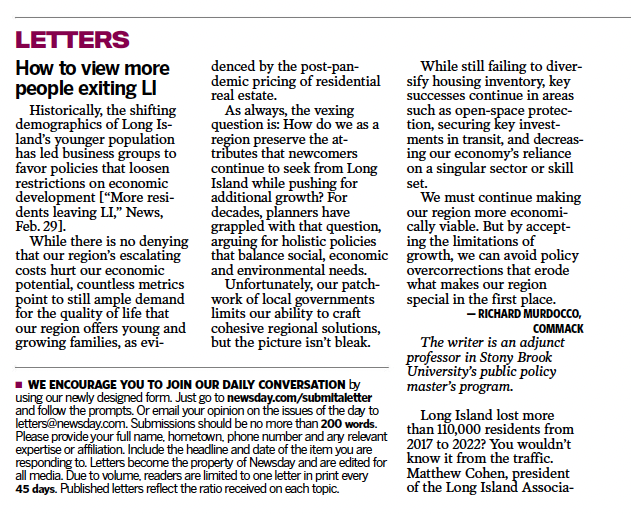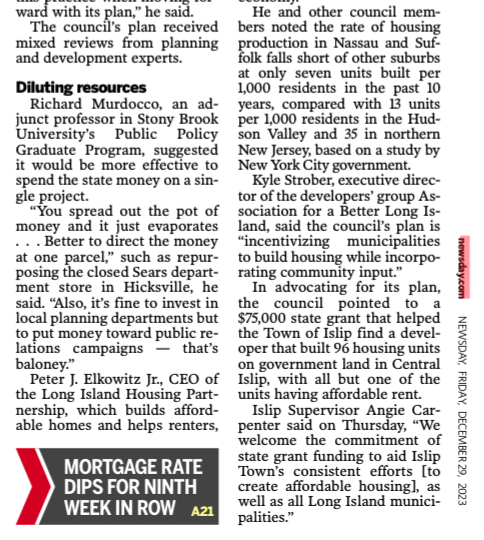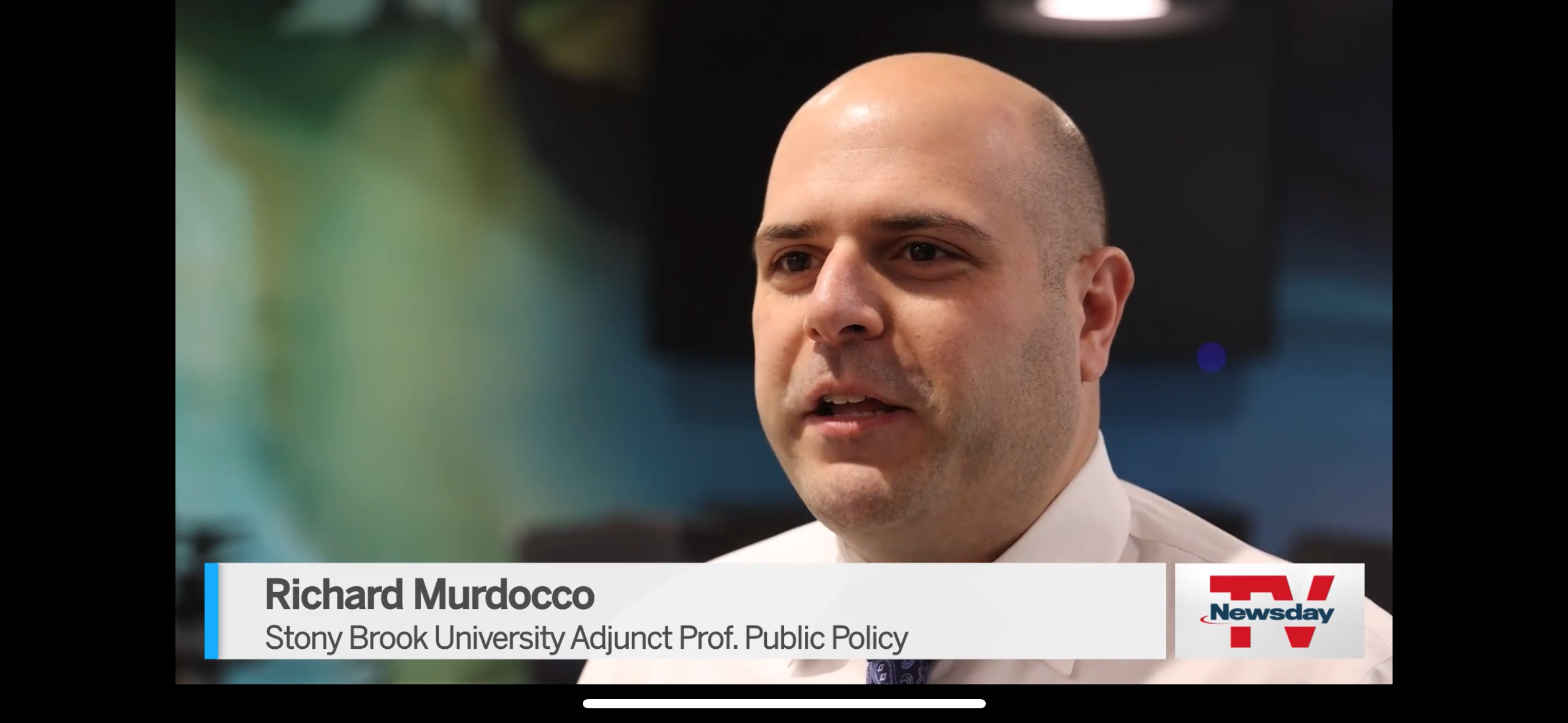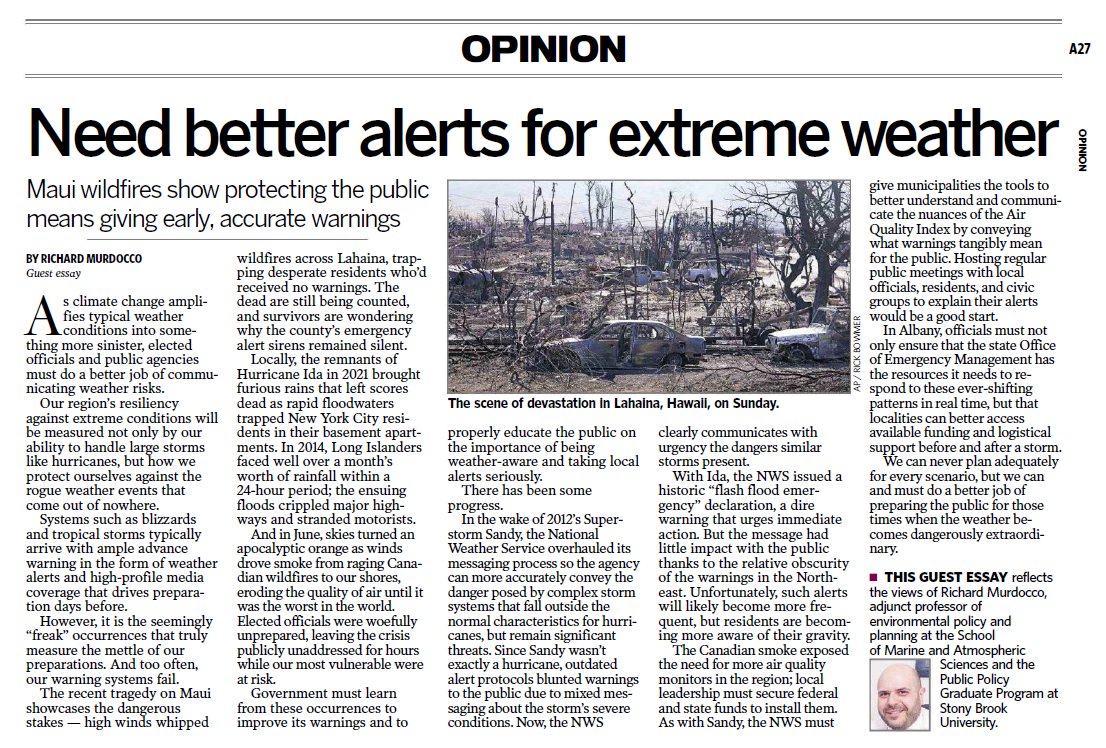The following was first published by the NY Daily News on November 21st, 2018. You can read the original here.
By Richard Murdocco
The region is unprepared for Amazon’s embrace of Queens. But it doesn’t have to be this way.
With some long-overdue investments and innovative land use policies, New York’s surrounding communities can not only supplement the strengths of New York City, but carve out a unique suburban niche that will ensure continued economic growth in the coming decades.
While the billions in tax breaks that enticed Amazon to Long Island City have become the source of local outcry, little has been said about how the suburbs will be impacted. The pre-existing challenges these communities face will surely be amplified when the tech-giant spends $2.5 billion on their new headquarters and hire 25,000 employees — with average salaries around $150,000.
In the ‘burbs, demand is already high, residential inventory is low and Amazon’s arrival will further stoke the flames.
Straining to meet current demands, suburban housing markets, wastewater systems, highways and mass transit links can potentially buckle under the newfound pressure. It’s critical to immediately plan for the impacts of the tech giant well beyond the bounds of the five boroughs, as well as for other companies that may follow in Amazon’s footsteps.
Addressing these complex issues are no easy task, and readying for what’s to come requires a monumental investment both economically and politically in the longstanding mainstay suburban challenges of affordability and infrastructural capacity.
By the time the ribbon is cut on Amazon’s new HQ2, policymakers in suburban municipalities must be prepared to offer housing for young professionals, seasoned corporate veterans, retirees and everyone in between. Elected officials must work together to ensure that federal and state governments provide the support needed to enhance and maintain the transit links that tie the tri-state region together, while at the same time working to preserve the intangible aspects that amount for quality-of-life — factors that drive the appeal of these areas in the first place.
The good news is that progress is already being made, even if it’s glacial.
Out on Long Island, the Long Island Rail Road is looking to enhance their presence in the Long Island City area with newly minted stations and signal improvements, while at the same time working to increase commuter capacity and system-wide resiliency in the 9.8-mile stretch between Floral Park and Hicksville with the addition of a third track. All the while, the LIRR continues to carve out a massive new concourse for their link beneath Grand Central Terminal. When complete, each improvement will serve Amazon’s workers well.
Local towns, who have oversight and command of zoning, are hunting for ways to increase developmental densities within walkable distances to LIRR’s stations across Nassau and Suffolk Counties. Some have been successful, while others lag behind. With Amazon’s arrival, the pressure will be on to loosen zoning to allow for more housing. Devoted resources to smart planning efforts should help dictate areas where such growth should take place.
In Westchester and Rockland Counties, there is a new Tappan Zee Bridge, which funnels travelers across the river and south towards a new HQ2 and soon-to-be improved JFK and LaGuardia Airports. And on both sides of the Hudson, policymakers continue to press for funding for the Gateway Program, which would add a new rail tunnel linking New Jersey to Manhattan, as well as make much-needed improvements to local tunnels and bridges across the Garden State. While far-from-easy now, commuting from the suburbs in Jersey to Long Island City will be close to impossible if the existing Hudson River tunnel fails.
When taken together, each project amounts to the larger goal of making this region more attractive for economic investment — but we’re not quite where we have to be yet.
Amazon gives our suburbs the chance to stop their pursuit of outright competition with New York City, and instead play to their strengths that can complement unmet needs for housing and supplemental industries. To effectively do so, municipalities must take the urban planner’s approach, and take care to balance the environmental, social and economic forces that continue to shape our region.
Murdocco writes on the region’s land use and regional policy issues at TheFoggiestIdea.org, and is an adjunct professor of economic development and planning at Stony Brook University.

